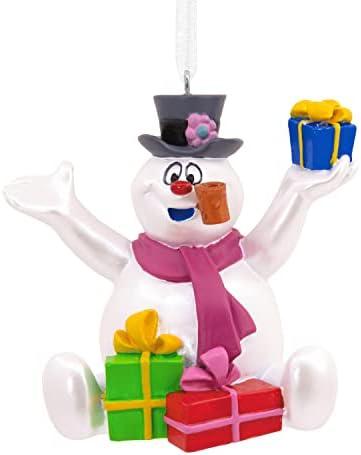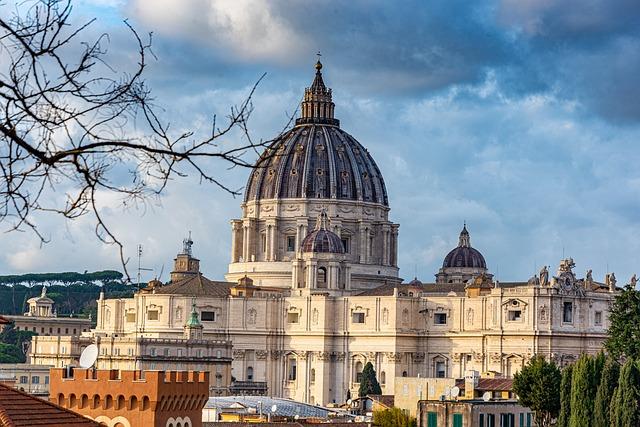As the last echoes of carols faded and twinkling lights dimmed, a small village nestled in the snow began to stir. The townsfolk gathered in the square, their breath visible in the frosty air, to celebrate the end of the Christmas season, known as Epiphany. Children, their cheeks rosy from the cold, eagerly awaited the arrival of the Three Kings, who would bring gifts and stories of wonder. With laughter and joy, they shared treats and memories, marking the transition from festive cheer to the promise of new beginnings, as the spirit of Christmas lingered in their hearts.
Table of Contents
- Understanding the Significance of Epiphany in the Christmas Calendar
- Traditions and Celebrations: How Different Cultures Mark the End of Christmas
- Reflecting on the Season: Ways to Transition from Festivity to Everyday Life
- Sustainable Practices: Eco-Friendly Tips for Post-Christmas Cleanup and Storage
- Q&A

Understanding the Significance of Epiphany in the Christmas Calendar
As the festive lights begin to dim and the last remnants of holiday cheer linger in the air, many people may wonder about the significance of the day that marks the conclusion of the Christmas season. This day, known as Epiphany, is celebrated on January 6th and holds profound meaning in various Christian traditions. It commemorates the revelation of Christ to the Gentiles, represented by the visit of the Magi, or Wise Men, who traveled from afar to pay homage to the newborn King. This moment not only signifies the universal nature of Christ’s message but also invites reflection on the journey of faith and the importance of seeking truth.
In addition to its theological implications, Epiphany serves as a bridge between the joyous celebrations of Christmas and the solemnity of the liturgical calendar that follows. It is a time for families and communities to gather, often marked by unique customs and traditions. Some may engage in the practice of **blessing their homes**, while others partake in **special meals** that symbolize the abundance of blessings received throughout the year. The day also heralds the beginning of the season of Ordinary Time in the Church, encouraging believers to carry the spirit of Christmas into their daily lives, fostering a sense of gratitude and purpose as they embark on a new year.

Traditions and Celebrations: How Different Cultures Mark the End of Christmas
As the festive season draws to a close, various cultures around the world have unique ways of marking the end of Christmas. In many Latin American countries, the celebration of Día de los Reyes (Three Kings’ Day) on January 6th is a significant event. This day commemorates the arrival of the Magi to present gifts to the baby Jesus. Families often gather to enjoy a special cake called Rosca de Reyes, which is shaped like a crown and filled with surprises. Children eagerly await the arrival of the Three Kings, who are believed to bring gifts, similar to Santa Claus in other cultures. The festivities include parades, music, and vibrant displays, creating a joyful atmosphere that extends the holiday spirit.
In contrast, many Eastern European countries observe the end of Christmas with the celebration of Epiphany, which falls on January 19th in some traditions. This day is marked by various customs, such as the blessing of water, symbolizing the baptism of Jesus. In Greece, people celebrate with the Vasilopita, a special cake that contains a hidden coin. The person who finds the coin is said to receive good luck for the year ahead. Similarly, in Poland, families gather for a festive meal, often featuring traditional dishes, and share wishes for health and happiness in the coming year. These rich traditions highlight the diverse ways cultures honor the conclusion of the Christmas season, each adding its own flavor to the festivities.

Reflecting on the Season: Ways to Transition from Festivity to Everyday Life
As the twinkling lights dim and the last remnants of holiday cheer fade, many find themselves navigating the transition back to everyday life. This shift can feel jarring, but it also presents an opportunity for reflection and renewal. Embracing the calm after the festive storm can be a chance to set new intentions and cultivate a sense of gratitude for the moments shared. Consider taking time to reflect on the joys of the season and how they can inspire your daily routine. Here are some ways to ease into this new phase:
- Journal your thoughts: Write down your favorite memories from the holiday season and what you hope to carry forward.
- Declutter your space: Clear away decorations and items that no longer serve you, making room for fresh energy.
- Reconnect with nature: Spend time outdoors to ground yourself and appreciate the beauty of the changing seasons.
- Set new goals: Use the inspiration from the holidays to create personal or professional goals for the upcoming months.
Transitioning from the festive atmosphere to the rhythm of daily life can also be a time for self-care and nurturing your well-being. Incorporating small rituals into your routine can help maintain the warmth of the season while fostering a sense of normalcy. Consider these practices to keep the spirit alive:
- Cook comforting meals: Prepare dishes that remind you of holiday gatherings, infusing your home with warmth and nostalgia.
- Host a cozy gathering: Invite friends or family for a casual get-together to share stories and laughter.
- Engage in creative activities: Explore crafts or hobbies that bring you joy, allowing for self-expression and relaxation.
- Practice mindfulness: Incorporate meditation or yoga into your routine to maintain a sense of peace and balance.

Sustainable Practices: Eco-Friendly Tips for Post-Christmas Cleanup and Storage
As the festive season winds down, it’s essential to approach the cleanup and storage of decorations with an eco-conscious mindset. Start by sorting through your holiday items and consider donating any decorations or gifts that you no longer use or need. This not only reduces waste but also spreads joy to others. When it comes to wrapping paper, opt for reusable materials like fabric or recycled paper, and remember to save any gift bags or boxes for future use. By making these small changes, you can significantly lessen your environmental impact.
For those who have a real Christmas tree, consider recycling it instead of tossing it in the trash. Many communities offer tree recycling programs that turn your tree into mulch or compost, enriching the soil for future plantings. If you have artificial decorations, ensure they are stored properly to extend their lifespan. Use biodegradable storage bins or repurpose old containers to keep your items safe and organized. Additionally, when packing away lights, wrap them around cardboard or use a dedicated storage reel to prevent tangling and damage, ensuring they can shine brightly for many seasons to come.
Q&A
-
What is the end of the Christmas season called?
The end of the Christmas season is commonly referred to as Epiphany, which is celebrated on January 6th. This day marks the revelation of Christ to the Gentiles, represented by the visit of the Magi.
-
Are there other names for the end of the Christmas season?
Yes, some people also refer to it as Twelfth Night, which is the evening before Epiphany, marking the conclusion of the Twelve Days of Christmas.
-
What traditions are associated with the end of the Christmas season?
Traditions may include taking down Christmas decorations, hosting a final festive gathering, or participating in special church services to commemorate the occasion.
-
Is the end of the Christmas season celebrated worldwide?
While Epiphany is recognized in many cultures, the way it is celebrated can vary significantly. In some countries, it is a major holiday with parades and feasts, while in others, it may be a quieter observance.
As the twinkling lights dim and the last carols fade, the end of the Christmas season, often referred to as Epiphany or Twelfth Night, invites reflection. It’s a time to cherish memories made and look forward to the promise of new beginnings.

大家好,我是彼得潘,專業的手法身體治療師。我喜歡探索和研究各種主題,並透過與人工智慧的合作分享專業、實用、有趣的文章。我們定期進行人工審核,以確保內容的準確性。如果您發現文章中有任何不準確的地方,請隨時與我們聯繫,我們會及時糾正。您可以透過 [email protected] 與我們聯繫。



